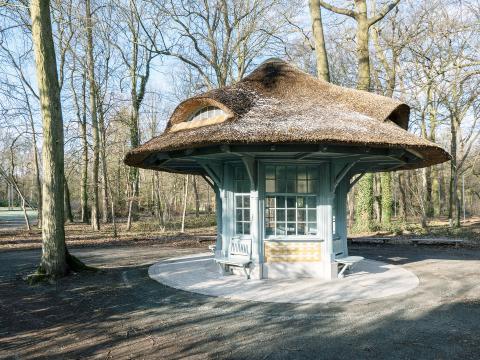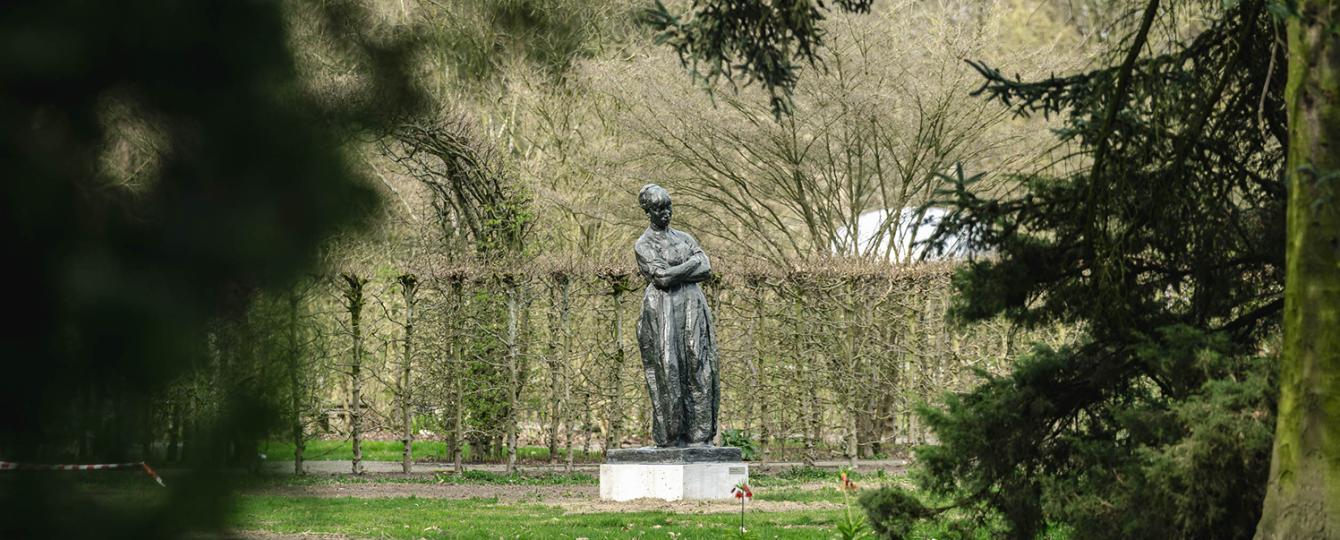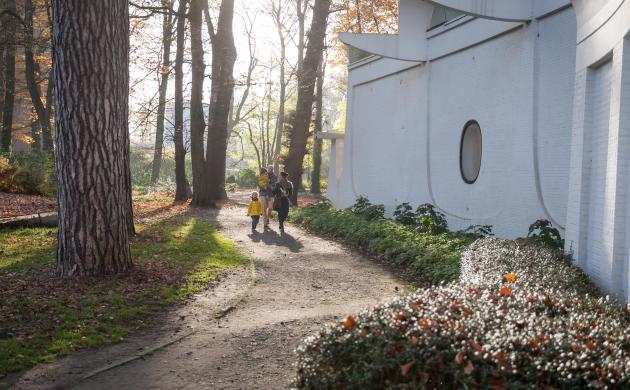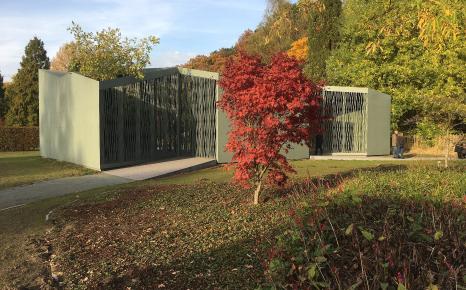30 hectares large
The Middelheim Museum spans an impressive 30 hectares, making it one of the largest museums in Flanders. Over the years, the art park has undergone numerous changes. Artworks have been relocated, park areas redesigned, and expanded. Not only does the art collection have a story to tell, but the park with its castle and pavilions also has its own tale.
Old core
The old core of the Middelheim Museum consists of two park areas: Middelheim-Laag (in the north) and Middelheim-Hoog (in the south). The biennials were held in Middelheim-Laag, while the purchased works were displayed in Middelheim-Hoog. In 1993, as part of Antwerp Cultural Capital, the permanent collection was rearranged across both areas. More than a hundred sculptures were relocated. Middelheim-Hoog is also home to the Castle and the Braem Pavilion.
Westward expansion
To the west and east of this old core, the museum expanded. For the expansion on the west side (next to Beukenlaan), landscape architect Michel Desvigne designed a simple, sleek pattern with the planting of 1,500 ornamental apple trees. Here, metal, painted sculptures from the 1960s and 1970s were brought together. You'll also find the open-air depot here.
Eastward expansion
The expansion on the east side, along Lindendreef, was originally a laboratory at the intersection of sculpture and architecture. Characteristic is the 'Artist Entrance' by John Körmeling. Architect/artist Luc Deleu designed a plan with walking paths. Several monumental artworks gave this new park area more structure. Here, you'll also find the collection pavilion and a multifunctional space – or 'Franchise Unit' – by Dutch artist Joep Van Lieshout. This zone will be repurposed starting in 2025.
Hortiflora
The formal garden Hortiflora lies to the west of Middelheimlaan. This former flower garden of Nachtegalenpark became part of the Middelheim Museum in 2012. The garden has a dual structure. A green belt encloses a large, open space where the sun shines freely. Visitors here experience a sense of vastness. The design is sleek and formal. The atmosphere is unique in the park complex and distinct from the other parts of the Middelheim Museum. The House, designed by Robbrecht and Daem, provides space for more delicate artworks.
Castle
After extensive renovation, the castle reopened in 2012. The ground floor became the central meeting place and an information point with a reception desk, the museum café MIKA, and the museum shop. The first floor was converted into offices for staff members.
 © Cédric Raskin
© Cédric Raskin
Gloriette and Aubette
These are not the names of the court ladies who lived in the castle. Gloriette and Aubette are the French words for the boathouse (near the castle) and the park warden's house (opposite the main entrance).
The gloriette was built at the end of the 18th century as an outdoor salon. The aubette was constructed a century later. Both cottages have been restored to their original state. The restoration was funded 70% by the Heritage Agency of the Flemish Government.




